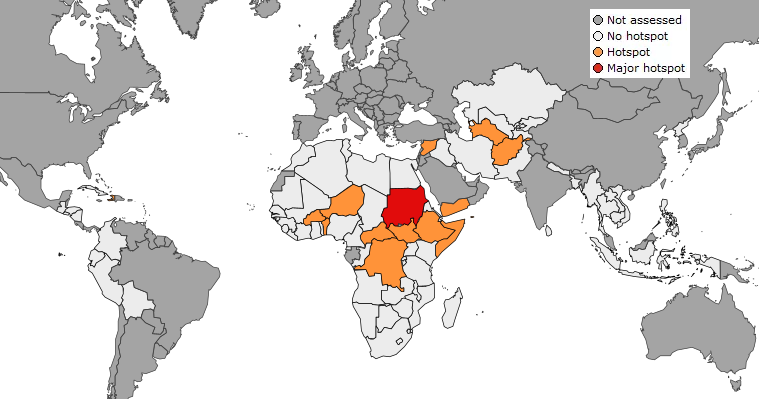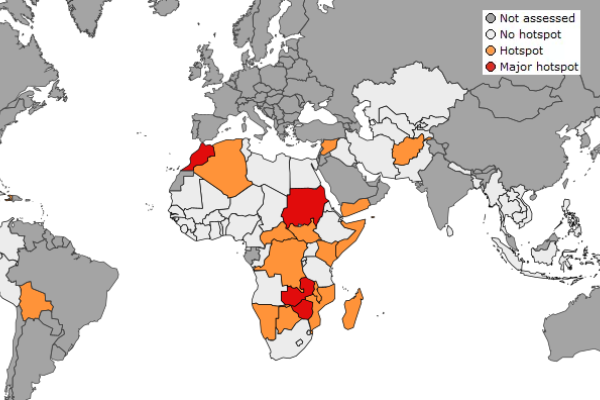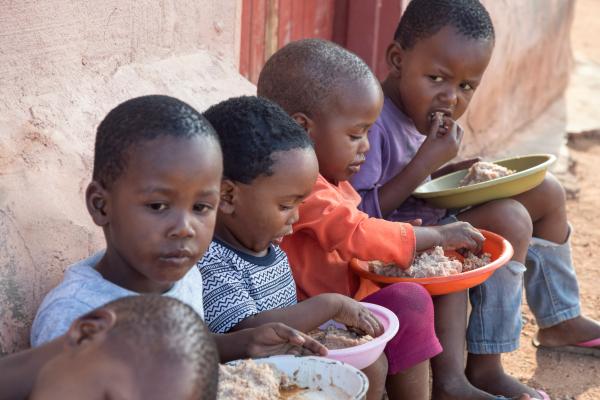
The August edition of the JRC's Anomaly Hotspots of Agricultural Production (ASAP) assessment is now available.
- The main cereal season has been completed in the Southern Africa region. Aggregate cereal production is estimated at ca. 11% above the 5-year average (FAO, July 2023). Positive production prospects are reported for winter wheat in South Africa and Zimbabwe. There is concern for the 2023/2024 agricultural season as land preparation and planting will likely be impacted by a delayed start or erratic rainfall due to El Niño (FEWSNET (July 2023)).
- In East Africa, early pastoral vegetation depletion is observed in parts of Somalia, Kenya, Uganda and South Sudan. Crop conditions for main season have worsened in Ethiopia and Sudan, and seasonal weather forecasts until October continue to be unfavourable for the two countries. The need for humanitarian assistance in the region remains very high and is driven in particular by the nearly 20 million people in need of humanitarian assistance in the Sudan crisis and by the high needs in Ethiopia, Somalia and South Sudan.
- In West and Central Africa, first season maize harvest is ongoing in the southern parts of the Gulf of Guinea under favourable prospects. Harvest of coarse grains in the northern parts will start in late September and generally, biomass conditions are good except for localised areas in northern Benin, northern Togo and northern Cote d’Ivoire. Poor crop conditions are observed in most regions of Burkina Faso and in parts of Niger. A rainfall deficit has been affecting the southern agricultural zones in Mali.
- In North Africa and the Middle East, the winter cereal season was finalised in July. Morocco, Algeria and Tunisia are expecting crop yields clearly below the 5-year average. In contrast, average to above average prospects are expected in Syria, Iraq (except Ninewa) and Iran (except mainly Golestan and Khorasan in the north-east). In Iran, prospects for rice are good, while in Iraq, rice cultivation has been banned in Najaf and Qadissiya. In Yemen, although prospects are good for sorghum and wheat, food insecurity continues to affect 17 out of 30 million people.
- In Central Asia, the harvest of winter cereals ended with mixed prospects: poor in Turkmenistan, below average in Kyrgyzstan and southern Kazakhstan, but good in Uzbekistan (except Kashkadarya) and Tajikistan. Prospects for spring wheat are below average in northern Kazakhstan and mixed in Afghanistan (below average in the north-west and north, close to average in the south and average to above average in the east). In South Asia, prospects are favourable for summer (Kharif) crops in Pakistan and for rain fed Aman rice in Bangladesh. In Sri Lanka, harvest of second (Yala) rice and maize has started with good prospects.
- In continental South-East Asia and the Philippines, prospects are favourable for main season rice, except in some parts of northern Thailand and northern Vietnam. In Indonesia, prospects for dry season rice to be harvested from July to October are close to average. In North Korea, maize harvest has started and rice harvest will start in September and prospects are favourable thanks to above average crop biomass.
- In Latin America and Caribbean islands, average to above average harvest prospects are expected. In all Central American countries except Nicaragua, the harvest of maize and beans of the Primera cycle is expected below normal in about 20% of the areas. The dryer than normal rainfall forecast in eastern parts of Central America and most areas of the Andean countries until the end of October, could put at risk ongoing crop cycles.
The next assessment is scheduled for the end of September 2023.
Details
- Publication date
- 5 September 2023
- Author
- Joint Research Centre
- JRC portfolios




